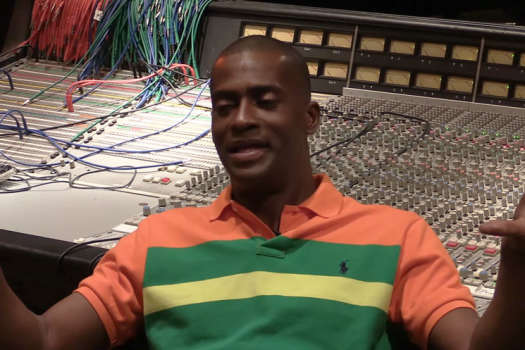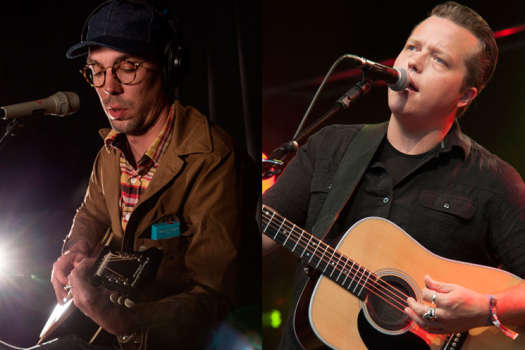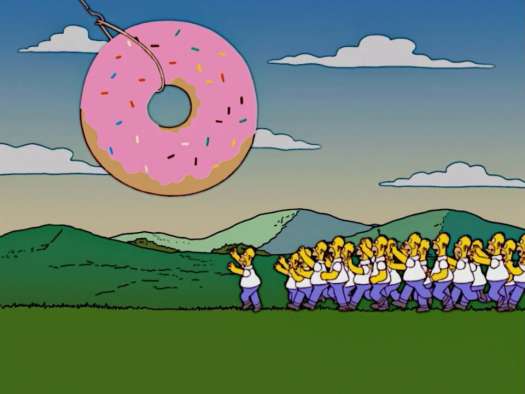Scanning Bill Laswell's prodigious discography is like reading a concordance to the last 20 years of funk, free jazz, ambient, dub, spoken word, hard rock and world music. The scores and scores of titles Laswell has worked on as bassist, producer or composer (and often all three) are bewilderingly far flung, but the striking thing about Laswell is the continuity in his career. He is a musical alchemist of the first order, and his genius stems as much from his leaps of imagination as his prowess behind the boards. Laswell can take two disparate strands of tradition and find the bottom end of each, teasing out the grooves until they begin chattering to each other like long-separated kin. There's also the abiding spiritual quest present in most of his work - whether it's the nearly maddeningly frenetic free jazz of James Blood Ulmer, a supple funk groove or mesmerising Gnawa music - that puts it all on the same footing. "Music is all sound experience," says Laswell from his New York headquarters. "It's all about sound perception. Some music has an obviously sacred function, but I see other things as sacred in a different way. Even in electronic music, there's a spirit. You can't say something's not sacred because it's digital. It's our perception that holds us back."
1979
Having come from Detroit some years before, Laswell makes his mark in New York's no wave scene that's flaring up among the ashes of punk and disco. Laswell's ongoing project of 20 years, Material, is born.
1981
Laswell runs into Brian Eno several times and badgers him into collaborating. Eno invites Laswell to play in a session with David Byrne and David van Tieghem, as well as a young woman Laswell remembers as Edwina, who played percussion in a nearby park. Laswell credits the little-known Edwina's influence with overriding Eno's and Byrne's Krautrock fixation, making My Life in the Bush of Ghosts a landmark fusion of funk, jazz and African rhythms.
The line-up of Material expands to a familiar cast of avant-jazz and difficult rock all-stars like Sonny Sharrock, Fred Frith, Fred Maher and Henry Threadgill for the Memory Serves album. In one of his most productive ongoing partnerships, Laswell also plays on Frith's Speechless album.
1982
Material adds regular Laswell accomplices like Tony Thompson, Nile Rodgers, Nicky Skopelitis and Bernard Fowler to the roster. One Down marks another rapid shift for Material, incorporating his new interest in the funk and hip-hop Laswell has been hearing at Bronx street parties, and its technology: the sequencer, the drum machine and the vocoder. A teenaged Whitney Houston makes her recording debut onOne Down , an appearance brokered by a label boss who knew her aunt, soul singer Cissy Houston. Laswell's assessment of her performance: great voice, very professional, didn't seem to have the slightest impact on her career path to follow.
At the same time, Laswell also becomes more deeply ensconced in the New York avant-garde scene, playing bass on albums by sax offender John Zorn, guitar terrorist Elliott Sharp and reconstructed glam rocker Eno.
1983
Laswell and Herbie Hancock hastily recorded a demo of "Rockit," but don't fully grasp what they're on to until Laswell slips it in a tape deck at a stereo store and watches the jaws of all the kids within earshot drop. "Rockit" becomes a huge worldwide hit and a template for much of the techno to follow years later - it probably stacks up as Laswell's single most influential recording.
The same year marks perhaps Laswell's most fortuitous intervention. "Afrika Bambaata called me and said he wanted to do a heavy metal-rap album, and he asked if I knew Def Leppard," Laswell recalls with a faint laugh. "I said no, but I do know this guy called Johnny Lydon. Bambaata said he'd be cool." The unlikely pairing proves to be potent on Time Zone's "World Destruction," with both Lydon and Bambaata trying to outdo each other with bombastic raps over probably the biggest guitars heard on a rap single to that point.
1984
Laswell releases his first solo album, Baselines , although in line-up and conception, it differs little from Material. His production of Gil Scott-Heron's anti-Reagan opus "Re-Ron" is also essentially a Material single. His entourage is also in tow forSound System , Herbie Hancock's Grammy-winning follow-up toFuture Shock , as they further test the limits of electronic music within traditional jazz and rock structures, but this time with a full retinue of no wave veterans and African musicians like percussionist Aiyb Dieng, a frequent collaborator. Laswell is already working on a model of world music more sophisticated and less assimilationist than most of today's.
1985
Further excursions into the intersections between electronic and acoustic, Western and African music with Deadline's Down By Law album and Village Life, a collaboration between Hancock and Foday Musa Suso on talking drum, produced by Laswell.
1986
Public Image Ltd's Album yields the closest thing they ever have to a hit single with "Rise," but the album was commandeered entirely by Laswell and his cohorts, including subtlety-challenged guitarist Steve Vai. Most of Album is recorded before Lydon even entered the studio, which required Laswell to smooth Lydon's ruffled feathers. Album also marks the comeback of former Cream drummer Ginger Baker, whom Laswell tracks down on a secluded olive farm in Italy's Tuscany region. Laswell and the Material crew also record Baker's Horses and Trees album.
1987
Laswell produces Sly and Robbie's touchstoneRhythm Killers , an experience that helped galvanise Laswell's abiding love of dub. "Meeting Sly and Robbie brought me closer to what I was influenced by," he says. Sly Dunbar is also recruited to play drums on the Laswell-produced Ryuichi Sakamoto albumNeo Geo , the culmination of Laswell's frequent trips to Japan (60 to 70 times since 1983) and Laswell's latest cross-cultural fusion. Laswell also finds the time to play on far-reaching jazz albums by Last Exit, Sonny Sharrock and James Blood Ulmer and to produce Mick Jagger's solo album,She's The Boss .
1989
Two excellent Golden Palominos albums, a Nicky Skopelitis album and yet another ground-breaking Material album, Seven Souls (collaborating with William S. Burroughs for the first time), but the 1989 release that sticks out is his production of Swans'The Burning World . Laswell again imports his usual entourage to Michael Gira's band, and the clanking, groaning gloom of Swans is suddenly transforms into chamber elegance. "Gira had come to an end of what he had been doing, but he felt he was ready to bring about the change all by himself. He probably should have waited until he was ready instead of having me produce it, and I think it was a bit of a shock for him because he didn't control it. It might have hurt him and his following, but I also don't think either of us have any regrets about it."
1990
Laswell mints the Axiom imprint, spurring his prolific output to a dizzying pace. Besides producing two albums by the highly emotive drummer Ronald Shannon Jackson, Laswell stages a P-Funk All-Stars reunion with a Bootsy's Rubber Band album, Jungle Bass , featuring Fred Wesley, Maceo Parker, Bernie Worrell and Gary "Mudbone" Cooper. Laswell's first recordings of West African music appear, including the seminal Gnawa Music of Marrakesh album.
1991
A sprawling line-up encompassing virtually every facet of Laswell's recording career, from dub to P-Funk alumni to no wave survivors to even the Jungle Brothers, is enlisted for Material'sThe Third Power. Laswell also makes his debut with the equally prolific John Zorn's high concept trio, Painkiller.
1992
Praxis - a sort of Material side project - furthers its experimentation with collages of disparate sounds withTransmutation , but 1992's most important recording isThe Master Musicians of Jajouka with Bachir Attar , as he becomes more immersed in the sacral functions of chant and trance music.
1993
He only plays bass, but with its enhanced bottom end and muscular grooves, the Golden Palominos' This Is How It Feels sounds more like Laswell's band than Anton Fier's. Laswell is definitely the production genius behind Umar Bin Hassan'sBe Bop of Be Dead . The Last Poet is all outrage, fury and apocalypse with Laswell, Bootsy and a crack band supplying the funky fire and brimstone, striking an unsettling balance between being danceable and terrifying. Laswell starts up yet another label, Black Arc, specifically for hard rock/funk hybrids, such as Zillatron (another Bootsy alter ego), Slave Master and O.G. Funk.
1994
Another comeback for a legendary drummer, Hell and Back by Buddy Miles Express, while he also delves into ambient soundscapes with the Axiom Ambient project, including a collaboration with the Orb. Another brilliant Gnawa album, The Trance of Seven Colors by Maleem Mahmoud Ghania with Pharaoh Sanders, this time drawing the links between the spirituality at the heart of both Gnawa chanting and percussion and free jazz. Laswell also retrieves and fattens up the bottom end that Steve Albini discarded from King Cobb Steelie's moment of splendour, Project Twinkle - an album that really shows how dextrously Laswell slips from hard rock grooves to vaporous space dubs.
1995
Hakim Bey, new age ranter and seer of capitalist apocalypse, reads from his works over Laswell-constructed sound structures. Meanwhile, Laswell attempts one of his most daring "collisions" between musical cultures with Sola'sBlues in the East , which stands as the antithesis of most world music engagements, where traditions intersect without simplifying them or making them more intelligible to the uninitiated. Material's Hallucination Engine succeeds brilliantly with its narcotic brew of ambient, funk, jazz, dub, African and Japanese music.
1997
The Last Poets are in top form again with the Laswell-producedTime Has Come , featuring an inspired cameo from Chuck D among its guests. Times being what they are, the Last Poets come fully armed with outrage and invective, and Laswell provides the appropriately incendiary funk.
1998
With remix projects of Miles Davis and Bob Marley, Laswell takes on sacred cows with legions of reverential fans who seem rather split over these albums. "There are a lot of real Marley purists," says Laswell, "which is one reason why there were no vocals, so we weren't actually remixing his voice, just the instrumental tracks. And that's the tradition of dub, anyway, to remove the vocals. As for Miles, I could have worked with him a few times, but I wanted to make sure I was ready, and I missed my time. But with the Miles project, I felt like I was really close to that stuff, so I went more with my intuition."
1999
Laswell finally gets around to working with one form of world music, Cubanson , that's flourished without any intervention from him. The briefest way of explaining Havana Mood is to say that it's Cuban dub, and yes, it works wonderfully. Meanwhile, he's dusts off Material forIntonarumori , a flat-out hip-hop album featuring guest appearances by Mr. Len of Company Flow, New Kingdom's Jason Furlow, Kool Keith, Wu-Tang's Killah Priest and Public Enemy's Flavor Flav. It's no-gimmicks hip-hop, hard-hitting beats, a fat low-end with several nods to old school rap, following from the album's manifesto, "Rap is still an art."
"It's a line from KRS-One, I think," Laswell explains. "It's a way of saying that hip-hop is a culture, and it was a style of music and culture ten years before it was ever recorded. It's an art form as much as jazz. A lot of people are merely capitalising on it now for the money, but at the time, it really was about unity and peace and art."
1979
Having come from Detroit some years before, Laswell makes his mark in New York's no wave scene that's flaring up among the ashes of punk and disco. Laswell's ongoing project of 20 years, Material, is born.
1981
Laswell runs into Brian Eno several times and badgers him into collaborating. Eno invites Laswell to play in a session with David Byrne and David van Tieghem, as well as a young woman Laswell remembers as Edwina, who played percussion in a nearby park. Laswell credits the little-known Edwina's influence with overriding Eno's and Byrne's Krautrock fixation, making My Life in the Bush of Ghosts a landmark fusion of funk, jazz and African rhythms.
The line-up of Material expands to a familiar cast of avant-jazz and difficult rock all-stars like Sonny Sharrock, Fred Frith, Fred Maher and Henry Threadgill for the Memory Serves album. In one of his most productive ongoing partnerships, Laswell also plays on Frith's Speechless album.
1982
Material adds regular Laswell accomplices like Tony Thompson, Nile Rodgers, Nicky Skopelitis and Bernard Fowler to the roster. One Down marks another rapid shift for Material, incorporating his new interest in the funk and hip-hop Laswell has been hearing at Bronx street parties, and its technology: the sequencer, the drum machine and the vocoder. A teenaged Whitney Houston makes her recording debut onOne Down , an appearance brokered by a label boss who knew her aunt, soul singer Cissy Houston. Laswell's assessment of her performance: great voice, very professional, didn't seem to have the slightest impact on her career path to follow.
At the same time, Laswell also becomes more deeply ensconced in the New York avant-garde scene, playing bass on albums by sax offender John Zorn, guitar terrorist Elliott Sharp and reconstructed glam rocker Eno.
1983
Laswell and Herbie Hancock hastily recorded a demo of "Rockit," but don't fully grasp what they're on to until Laswell slips it in a tape deck at a stereo store and watches the jaws of all the kids within earshot drop. "Rockit" becomes a huge worldwide hit and a template for much of the techno to follow years later - it probably stacks up as Laswell's single most influential recording.
The same year marks perhaps Laswell's most fortuitous intervention. "Afrika Bambaata called me and said he wanted to do a heavy metal-rap album, and he asked if I knew Def Leppard," Laswell recalls with a faint laugh. "I said no, but I do know this guy called Johnny Lydon. Bambaata said he'd be cool." The unlikely pairing proves to be potent on Time Zone's "World Destruction," with both Lydon and Bambaata trying to outdo each other with bombastic raps over probably the biggest guitars heard on a rap single to that point.
1984
Laswell releases his first solo album, Baselines , although in line-up and conception, it differs little from Material. His production of Gil Scott-Heron's anti-Reagan opus "Re-Ron" is also essentially a Material single. His entourage is also in tow forSound System , Herbie Hancock's Grammy-winning follow-up toFuture Shock , as they further test the limits of electronic music within traditional jazz and rock structures, but this time with a full retinue of no wave veterans and African musicians like percussionist Aiyb Dieng, a frequent collaborator. Laswell is already working on a model of world music more sophisticated and less assimilationist than most of today's.
1985
Further excursions into the intersections between electronic and acoustic, Western and African music with Deadline's Down By Law album and Village Life, a collaboration between Hancock and Foday Musa Suso on talking drum, produced by Laswell.
1986
Public Image Ltd's Album yields the closest thing they ever have to a hit single with "Rise," but the album was commandeered entirely by Laswell and his cohorts, including subtlety-challenged guitarist Steve Vai. Most of Album is recorded before Lydon even entered the studio, which required Laswell to smooth Lydon's ruffled feathers. Album also marks the comeback of former Cream drummer Ginger Baker, whom Laswell tracks down on a secluded olive farm in Italy's Tuscany region. Laswell and the Material crew also record Baker's Horses and Trees album.
1987
Laswell produces Sly and Robbie's touchstoneRhythm Killers , an experience that helped galvanise Laswell's abiding love of dub. "Meeting Sly and Robbie brought me closer to what I was influenced by," he says. Sly Dunbar is also recruited to play drums on the Laswell-produced Ryuichi Sakamoto albumNeo Geo , the culmination of Laswell's frequent trips to Japan (60 to 70 times since 1983) and Laswell's latest cross-cultural fusion. Laswell also finds the time to play on far-reaching jazz albums by Last Exit, Sonny Sharrock and James Blood Ulmer and to produce Mick Jagger's solo album,She's The Boss .
1989
Two excellent Golden Palominos albums, a Nicky Skopelitis album and yet another ground-breaking Material album, Seven Souls (collaborating with William S. Burroughs for the first time), but the 1989 release that sticks out is his production of Swans'The Burning World . Laswell again imports his usual entourage to Michael Gira's band, and the clanking, groaning gloom of Swans is suddenly transforms into chamber elegance. "Gira had come to an end of what he had been doing, but he felt he was ready to bring about the change all by himself. He probably should have waited until he was ready instead of having me produce it, and I think it was a bit of a shock for him because he didn't control it. It might have hurt him and his following, but I also don't think either of us have any regrets about it."
1990
Laswell mints the Axiom imprint, spurring his prolific output to a dizzying pace. Besides producing two albums by the highly emotive drummer Ronald Shannon Jackson, Laswell stages a P-Funk All-Stars reunion with a Bootsy's Rubber Band album, Jungle Bass , featuring Fred Wesley, Maceo Parker, Bernie Worrell and Gary "Mudbone" Cooper. Laswell's first recordings of West African music appear, including the seminal Gnawa Music of Marrakesh album.
1991
A sprawling line-up encompassing virtually every facet of Laswell's recording career, from dub to P-Funk alumni to no wave survivors to even the Jungle Brothers, is enlisted for Material'sThe Third Power. Laswell also makes his debut with the equally prolific John Zorn's high concept trio, Painkiller.
1992
Praxis - a sort of Material side project - furthers its experimentation with collages of disparate sounds withTransmutation , but 1992's most important recording isThe Master Musicians of Jajouka with Bachir Attar , as he becomes more immersed in the sacral functions of chant and trance music.
1993
He only plays bass, but with its enhanced bottom end and muscular grooves, the Golden Palominos' This Is How It Feels sounds more like Laswell's band than Anton Fier's. Laswell is definitely the production genius behind Umar Bin Hassan'sBe Bop of Be Dead . The Last Poet is all outrage, fury and apocalypse with Laswell, Bootsy and a crack band supplying the funky fire and brimstone, striking an unsettling balance between being danceable and terrifying. Laswell starts up yet another label, Black Arc, specifically for hard rock/funk hybrids, such as Zillatron (another Bootsy alter ego), Slave Master and O.G. Funk.
1994
Another comeback for a legendary drummer, Hell and Back by Buddy Miles Express, while he also delves into ambient soundscapes with the Axiom Ambient project, including a collaboration with the Orb. Another brilliant Gnawa album, The Trance of Seven Colors by Maleem Mahmoud Ghania with Pharaoh Sanders, this time drawing the links between the spirituality at the heart of both Gnawa chanting and percussion and free jazz. Laswell also retrieves and fattens up the bottom end that Steve Albini discarded from King Cobb Steelie's moment of splendour, Project Twinkle - an album that really shows how dextrously Laswell slips from hard rock grooves to vaporous space dubs.
1995
Hakim Bey, new age ranter and seer of capitalist apocalypse, reads from his works over Laswell-constructed sound structures. Meanwhile, Laswell attempts one of his most daring "collisions" between musical cultures with Sola'sBlues in the East , which stands as the antithesis of most world music engagements, where traditions intersect without simplifying them or making them more intelligible to the uninitiated. Material's Hallucination Engine succeeds brilliantly with its narcotic brew of ambient, funk, jazz, dub, African and Japanese music.
1997
The Last Poets are in top form again with the Laswell-producedTime Has Come , featuring an inspired cameo from Chuck D among its guests. Times being what they are, the Last Poets come fully armed with outrage and invective, and Laswell provides the appropriately incendiary funk.
1998
With remix projects of Miles Davis and Bob Marley, Laswell takes on sacred cows with legions of reverential fans who seem rather split over these albums. "There are a lot of real Marley purists," says Laswell, "which is one reason why there were no vocals, so we weren't actually remixing his voice, just the instrumental tracks. And that's the tradition of dub, anyway, to remove the vocals. As for Miles, I could have worked with him a few times, but I wanted to make sure I was ready, and I missed my time. But with the Miles project, I felt like I was really close to that stuff, so I went more with my intuition."
1999
Laswell finally gets around to working with one form of world music, Cubanson , that's flourished without any intervention from him. The briefest way of explaining Havana Mood is to say that it's Cuban dub, and yes, it works wonderfully. Meanwhile, he's dusts off Material forIntonarumori , a flat-out hip-hop album featuring guest appearances by Mr. Len of Company Flow, New Kingdom's Jason Furlow, Kool Keith, Wu-Tang's Killah Priest and Public Enemy's Flavor Flav. It's no-gimmicks hip-hop, hard-hitting beats, a fat low-end with several nods to old school rap, following from the album's manifesto, "Rap is still an art."
"It's a line from KRS-One, I think," Laswell explains. "It's a way of saying that hip-hop is a culture, and it was a style of music and culture ten years before it was ever recorded. It's an art form as much as jazz. A lot of people are merely capitalising on it now for the money, but at the time, it really was about unity and peace and art."




